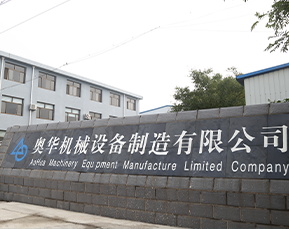 Afrikaans
Afrikaans  Albanian
Albanian  Amharic
Amharic  Arabic
Arabic  Armenian
Armenian  Azerbaijani
Azerbaijani  Basque
Basque  Belarusian
Belarusian  Bengali
Bengali  Bosnian
Bosnian  Bulgarian
Bulgarian  Catalan
Catalan  Cebuano
Cebuano  Corsican
Corsican  Croatian
Croatian  Czech
Czech  Danish
Danish  Dutch
Dutch  English
English  Esperanto
Esperanto  Estonian
Estonian  Finnish
Finnish  French
French  Frisian
Frisian  Galician
Galician  Georgian
Georgian  German
German  Greek
Greek  Gujarati
Gujarati  Haitian Creole
Haitian Creole  hausa
hausa  hawaiian
hawaiian  Hebrew
Hebrew  Hindi
Hindi  Miao
Miao  Hungarian
Hungarian  Icelandic
Icelandic  igbo
igbo  Indonesian
Indonesian  irish
irish  Italian
Italian  Japanese
Japanese  Javanese
Javanese  Kannada
Kannada  kazakh
kazakh  Khmer
Khmer  Rwandese
Rwandese  Korean
Korean  Kurdish
Kurdish  Kyrgyz
Kyrgyz  Lao
Lao  Latin
Latin  Latvian
Latvian  Lithuanian
Lithuanian  Luxembourgish
Luxembourgish  Macedonian
Macedonian  Malgashi
Malgashi  Malay
Malay  Malayalam
Malayalam  Maltese
Maltese  Maori
Maori  Marathi
Marathi  Mongolian
Mongolian  Myanmar
Myanmar  Nepali
Nepali  Norwegian
Norwegian  Norwegian
Norwegian  Occitan
Occitan  Pashto
Pashto  Persian
Persian  Polish
Polish  Portuguese
Portuguese  Punjabi
Punjabi  Romanian
Romanian  Russian
Russian  Samoan
Samoan  Scottish Gaelic
Scottish Gaelic  Serbian
Serbian  Sesotho
Sesotho  Shona
Shona  Sindhi
Sindhi  Sinhala
Sinhala  Slovak
Slovak  Slovenian
Slovenian  Somali
Somali  Spanish
Spanish  Sundanese
Sundanese  Swahili
Swahili  Swedish
Swedish  Tagalog
Tagalog  Tajik
Tajik  Tamil
Tamil  Tatar
Tatar  Telugu
Telugu  Thai
Thai  Turkish
Turkish  Turkmen
Turkmen  Ukrainian
Ukrainian  Urdu
Urdu  Uighur
Uighur  Uzbek
Uzbek  Vietnamese
Vietnamese  Welsh
Welsh  Bantu
Bantu  Yiddish
Yiddish  Yoruba
Yoruba  Zulu
Zulu conveyor troughing rollers
Understanding Conveyor Troughing Rollers A Key Component in Material Handling Systems
Conveyor systems are integral to modern material handling, providing efficient and reliable movement of goods across various industries. Among the components that play a crucial role in the performance of conveyor systems are troughing rollers. These specially designed rollers enhance the functionality of conveyor belts, allowing for improved operational efficiency and safety. In this article, we will explore the significance, design, applications, and maintenance of conveyor troughing rollers.
What are Conveyor Troughing Rollers?
Conveyor troughing rollers are cylindrical supports that hold and guide conveyor belts. Unlike flat rollers, troughing rollers have a curved surface, which helps to create a concave shape that facilitates the containment of materials. This design is particularly advantageous for transporting bulk materials, such as coal, grain, or minerals, as it prevents spillage and improves load stability during transport.
Importance of Troughing Rollers in Conveyor Systems
Troughing rollers are essential for maintaining the effective operation of conveyor systems. Their importance can be summarized in several key points
1. Material Containment The trough shape effectively confines loose materials, preventing them from sliding off the conveyor belt. This containment ensures that materials reach their destination without loss or contamination.
2. Reduction of Belt Wear Troughing rollers help minimize friction between the conveyor belt and the material being transported, reducing wear and tear on the belt. This prolongs the life of the belt and contributes to lower maintenance costs.
3. Improved Conveyor Efficiency With enhanced load stability and proper alignment of the conveyor belt, troughing rollers ensure that materials are delivered efficiently. This reliability is crucial for maintaining production schedules and meeting operational demands.
4. Adaptability Troughing rollers can be designed in various configurations—such as 20°, 35°, or 45° angles—to accommodate different loading requirements. This adaptability allows businesses to customize their conveyor systems based on the specific needs of their operations.
Design Features of Troughing Rollers
Conveyor troughing rollers are designed with several features that enhance their performance
- Material Quality Typically made from durable materials such as steel or plastic, troughing rollers are built to withstand harsh operating environments. Their corrosion-resistant properties ensure longevity when exposed to wet or abrasive materials.
- Sealed Bearings Most troughing rollers are equipped with sealed bearings to protect against dust, dirt, and other contaminants. This feature reduces maintenance needs and increases the lifespan of the rollers.
conveyor troughing rollers

- Adjustable Features Some designs allow for adjustment of the roller angles or heights, providing flexibility for various operational setups. This adjustability can be critical for optimizing the performance of the conveyor system.
Applications of Troughing Rollers
Troughing rollers find application in a wide range of industries, including
- Mining and Minerals Used extensively for transporting ores, minerals, and other bulk materials, troughing rollers are vital for efficient mining operations.
- Agriculture In the agricultural sector, these rollers help transport grains and other harvests, ensuring that materials are contained and delivered effectively.
- Manufacturing Conveyor systems with troughing rollers are common in manufacturing operations, where they facilitate the movement of components and finished products along assembly lines.
- Waste Management In recycling and waste management facilities, troughing rollers assist in transporting refuse materials, ensuring that valuable resources are separated and processed efficiently.
Maintenance and Best Practices
To ensure the optimal performance of troughing rollers, regular maintenance is essential. Here are some best practices
- Regular Inspections Schedule routine inspections to identify signs of wear, misalignment, or damage. Early detection can prevent costly repairs and downtime.
- Lubrication Keeping the bearings well-lubricated reduces friction and wear, enhancing the efficiency and longevity of the rollers.
- Replacement When troughing rollers show significant wear or damage, prompt replacement is necessary to maintain system efficiency and safety.
In conclusion, conveyor troughing rollers are a vital component of material handling systems, ensuring effective transport and containment of bulk materials. By understanding their design, importance, applications, and maintenance requirements, businesses can enhance their operational efficiency and minimize costs associated with material transport. As industries continue to evolve, the role of troughing rollers will remain crucial in supporting efficient and effective conveyor systems.
-
Revolutionizing Conveyor Reliability with Advanced Rubber Lagging PulleysNewsJul.22,2025
-
Powering Precision and Durability with Expert Manufacturers of Conveyor ComponentsNewsJul.22,2025
-
Optimizing Conveyor Systems with Advanced Conveyor AccessoriesNewsJul.22,2025
-
Maximize Conveyor Efficiency with Quality Conveyor Idler PulleysNewsJul.22,2025
-
Future-Proof Your Conveyor System with High-Performance Polyurethane RollerNewsJul.22,2025
-
Driving Efficiency Forward with Quality Idlers and RollersNewsJul.22,2025





























